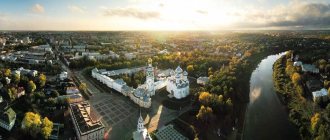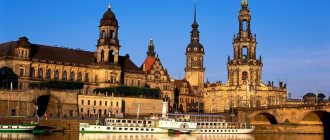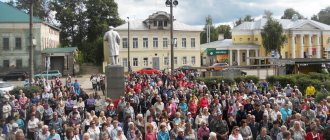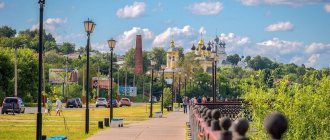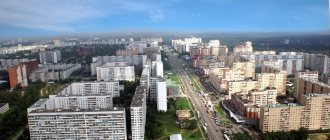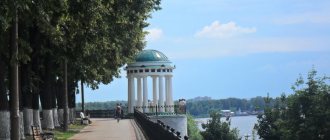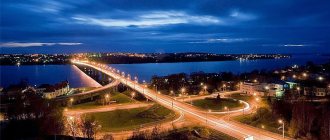Year founded: 1348
Aleksin celebrates the city day on
the 1st Saturday of August
.
In 2022,
this date is
August 6
.
The official founding date of the city is 1348
Aleksin
- a Russian city in the Tula region, located 60 km northwest of Tula, on both banks of the Oka River and on the Kaluga-Tula railway.
This is one of the oldest cities in this region. The official founding date of the city is 1348
, under which it was first mentioned in the Nikon Chronicle (in connection with the destruction of Aleksin by the troops of the Horde prince Temir) as a fortress on the steep left bank of the Oka. According to one version, the city received its name from the name of Metropolitan Alexy of Moscow, since it belonged to the head of the Russian Orthodox Church in 1354-1378.
It is reliably known that in 1472, the residents of Aleksin played an important role in repelling the Tatar attack on the Russian lands of the Khan of the Great Horde, Akhmat. When he approached their wooden fortress with significant forces, the townspeople did not give up and bravely defended themselves. And although the Tatars completely burned the city, these few days, while the defense lasted, were enough for the Russian troops to gather to confront the enemy and defend Moscow. The Oka line turned out to be firmly occupied by Russian regiments, and the khan did not dare to enter the battle and returned to the Horde.
For two centuries, Aleksin remained an important outpost of the defensive system of the Russian lands. Since then, and
for two centuries, Aleksin remained an important outpost of the defensive system of the Russian lands
, not only to repel Tatar raids, but also incursions from the Grand Duchy of Lithuania, and the location of the Grand Duchy "right hand shelf" In 1566, the city was included in the personal possessions of Ivan the Terrible, thus becoming a special sovereign inheritance - the oprichnina. And during the Time of Troubles of the early 17th century, he participated in the rebel movement of Ivan Bolotnikov, going over to the side of False Dmitry I. But already in 1607, Aleksin was taken by the troops of Vasily Shuisky.
Due to the expansion of the borders of the Russian state, by the beginning of the 18th century the city lost its military significance and in 1719, being by that time the administrative center of Aleksinsky district, it became part of the Tula province of the Moscow province. Since 1777, Aleksin has been a county town with a trading pier on the Oka River, serving Tula. In addition, fishing has been very developed here since ancient times.
St. Nicholas Church
In the 18th century, Aleksin gradually turned into a trade and craft city, which was facilitated by its convenient location on the navigable Oka waterway, iron ore deposits in the county, the presence of iron-making factories in the area and the proximity of Tula arms factories, and the needs of the local population for handicraft products. So, in 1728, not far from the city, the Mosolov brothers built the first ironworks). And the famous Aleksin merchant dynasties of the Azimovs, Maslovs, Zolotarevs, Rykalovs, Savostins, Shatskys specialized in the wholesale trade of livestock, grain and timber. In the 19th century, vocational schools, the first public banks, libraries, factories were opened in Aleksin, a railway was built...
In 1937, Aleksina entered the newly formed Tula region. At this time, it became a recognized industrial center of the Tula region - many industrial enterprises (chemical plant, thermal power plant and others) were built in the city at the rapid pace of the first five-year plans.
Mound of Glory with eternal flame
The city is also famous for its military exploits. Residents participated in the militia during the Patriotic War of 1812 and during the Great Patriotic War, when Aleksin played an important strategic role - in this area, Soviet troops held superior enemy forces to prevent a breakthrough on the Moscow-Tula road. And although the Nazis managed to occupy the city - it was occupied on November 29, 1941, but literally a month later it was liberated - on December 17 by troops of the Western Front during the Kaluga operation. During the war years, 7,662 Aleksin residents died a heroic death. Ten people were awarded the title of Hero of the Soviet Union.
In the post-war years, the powerful industrial development of the city continued - the reinforced concrete products plant (KZHI-480), the Aleksinsky meat processing plant and other enterprises were put into operation. New educational institutions have opened. In 1958, Aleksin became a city of regional subordination.
Aleksin-Bor is a unique natural monument
But Aleksin is known not only for industry.
Here, the climate is unique in its healing properties, the beautiful Oka River with its sandy reaches and picturesque banks, relict pine forest, healing mineral springs - all this has brought the city the glory of the pearl of the Tula region
. At the end of the 19th century, these picturesque urban surroundings became a permanent vacation spot for summer residents from Tula, Moscow and other cities of Central Russia. At different times, writers V. Veresaev, A. Chekhov, B. Pasternak vacationed here; artists N. Ulyanov, I. Levitan, V. Vatagin; composers A. Scriabin, R. Shchedrin; scientists I. Sechenov and V. Snegirev; artists V. Pashennaya, N. Smirnova, V. Kachalov and many other figures of national culture and art.
Today Aleksin, which since 2005 has been an independent municipal entity with the status of an urban settlement, is an administrative, industrial and cultural city, one of the most stable and dynamically developing in the Tula region.
Among the attractions of Aleksin the most famous are:
Aleksin-Bor is a relict pine forest, a natural monument of regional significance; the old part of the city - Zarechye, which has largely preserved the features of the Russian province of the last century, architectural monuments of the 17-19 centuries; Sorokinskoye, Petrovskoye and Ilinskoye settlements, which have archaeological value; ensemble of the Assumption Cathedral (19th century), St. Nicholas Church (18th century), Museum of Local Lore and others. Also in the city there is a Victory Memorial with an eternal flame and a mass burial of soldiers who fell during the Great Patriotic War and other memorial places. In general, Aleksin has more than 130 historical and cultural monuments, five of which are of federal significance.
The population of the city is about 57 thousand people (as of 2020).
Hometown Day
Aleksinians celebrate it on the first Saturday of August. Entertainment programs are prepared in all areas of the city, and they are a great success.
Aleksin is in 6th place in terms of population in the Tula region
Tulastat yesterday posted data on the population of the Tula region as of January 1, 2022. The total figure is 1,499,486 people. That is, we were only 515 residents short of remaining on the list of a region with a population of one and a half million people?
If so, that's sad. Although the hope of not losing the status of “one and a half million people” still remains. For the above data, as specifically noted in the summary, is a “preliminary assessment.” The fact is that there is still no accurate information on the balance of external migration to the region. So far, there is data for 11 months, according to which the preponderance of those arriving for permanent residence (permanent residence) in the Tula region over the departing residents is about five thousand. If December turns out to be equally positive, then it is possible that the benefit of compensation for the “missing” half a thousand people will be “clarified”.
However, even if this happens, the information will still be sad. Because in any real “demographic and migration” scenario, by the summer of 2022 the Tula region is almost guaranteed to lose its recent status. And its population will become less than one and a half million people. With the prospect of subsequent reduction and further. This process - under the best circumstances - should end in 2020-2021. Due to positive migration – if it continues – we should formally reach “zero”. But the excess of birth rates over deaths will apparently have to wait until 2025 or even 2028.
By the number of residents of cities, districts, municipalities. Lira, of course, “Big Tula” - 552,071 people. The regional center is so far the only “subject” of the province where the number of residents has grown slightly – by two to three hundred people. Naturally, at the expense of visiting people. The mortality rate in the hero city is also higher than the birth rate, as elsewhere in our country. For information: of this number, approximately 64 thousand people are residents of the Leninsky district. That is, the population directly in the city of Tula is about 488 thousand people. And in reality, the status of “half a million” here was also lost several years ago. In this regard, there is a bad, but, alas, slightly real joke: when the potential of the Leninsky district ends, Tula, in order to maintain the status of a city of “half a million,” will have to annex the Shchekinsky district. Then it will be enough for a long time, and in terms of territory we will become the largest city in Russia after Moscow.
In second place is Novomoskovsk, 137,684 people. Further, in descending order: Shchekinsky (106,102), Uzlovsky (81,725) and Kireyevsky (73,067) districts, the cities of Aleksin (67,770) , Donskoy (63,822) and Efremov (56,931), as well as Bogoroditsky (51,202) and Suvorovsky (34,882 people) districts. The minimum population by district is Kamensky (8,836), Arsenyevsky (9,676), Kurkinsky (9,676), Teplo-Ogarevsky (12,143) and Odoevsky (12,777 people). And the list is completed by two mysterious “micro-municipalities” in their socio-economic essence - the villages of Novogurovsky (3,431) and Slavny (1,887 people).
Well, let’s not forget to mention the smallest city in the country, which is also located in the Tula region. This is the city of Chekalin in the Suvorovsky district, where today less than 1,700 people live. Although, according to Russian laws, city status is assigned to settlements with a population of more than 10 thousand people. But this is an exception. And, by the way, it’s not the only one with us. There is also the city of Sovetsk in the Shchekinsky district, less than 9 thousand people live there, and this number is constantly decreasing...
Aleksin, city
September 15, 2012
4
1900s Aleksin
ALEXIN is a city in the Tula region. Administrative center of the Aleksinsky district.
Located in the northern part of the Central Russian Upland, on both banks of the Oka River, 59 km northwest of Tula, 69 km. east of Kaluga and 150 km. south of Moscow.
Population: 63,087 people.
Aleksin is divided by the Oka River into two parts, connected by a bridge - the old one - Zarechye and the new one - Sotsgorod. Sotsgorod grew up on the site of the industrial villages of Vysokoye, Myshega and Petrovskoye.
According to legend, the name Aleksin was given in 1298 by a Moscow prince. Daniil Alexandrovich after the name of his son Alexander (from the derivative form Alex, Aleksya). Sometimes the name is associated with the name of Metropolitan Alexei, to whom the city was given for feeding in 1354.
From the history:
- For the first time in written sources, Aleksin is mentioned in the Nikon Chronicle in 1348: “...Prince Temir of Orda, come with an army to the city of Oleksin of the holy wonderworker Peter, Metropolitan of Kyiv and All Rus', and settle down later...”.
- In 1472, Khan Akhmat entered Russian soil with great forces. Moscow did not know exactly where Akhmat was heading and therefore took the usual precautions. Therefore, on July 29, 1472, the enemy was able to almost unhindered approach the wooden fortress - the city of Aleksin. The Alexinians selflessly began to fight the enemy. And all the chroniclers who described the battle for Aleksin noted the heroism and courage of the townspeople.
- On July 30, the Mongol-Tatars set fire to the fortress, but the townspeople bravely defended themselves. While the battle at Aleksin was going on, Ivan III managed to send troops to defend Moscow. The merit of the Aleksinites is that they were the ones who held back the superior enemy forces for two days. By the beginning of the 50s of the 17th century, only about 450 people lived in Aleksin. In 1728, near Aleksin on the Myshega River, the Mosolov brothers built the first ironworks, which is now called Tyazhpromarmatura.
- In 1777, Aleksin became a district town of the Aleksinsky district of the Tula governorate (since 1796 - the Tula province).
- The city began to actively develop in the 19th-20th centuries, when it became the center of the sawmill and metallurgical industry, and also after the construction of the Kaluga-Tula railway in the middle of the 19th century.
- Since 1924, the city has been the center of the Aleksinsky district (since 1937 in the Tula region).
- In 1933, the government decided to build a chemical plant (plant 100) in the Moscow region, which included Aleksin. On March 27, 1941, the first thermal power plant was put into operation, and at the end of May, workshop No. 3 of plant 100. In the early 20s, the first dachas appeared in Aleksin, near a centuries-old pine forest. Writer Anton Chekhov also loved to relax in Aleksin.
- 7,662 people from Aleksin died at the front during the war. Ten people were awarded the title of Hero of the Soviet Union, two became full holders of the Order of Glory.
- The peak of the city's prosperity occurred in the 1970s, when the Chemical Plant reached its greatest prosperity, being the largest producer of gunpowder. It was then that the 2nd microdistrict (Shakhtyorsky district) was built up and the Zhalka park opened in the Gorushka microdistrict, which was rightfully considered the most beautiful park in the city, combining slender pine trees and wonderful artistic design. At the same time, the Myshega plant is reoriented to the production of shut-off valves for the oil and gas industry.
- On January 11, 2011, the old bridge over the Oka River was opened after reconstruction. In Aleksin there are now two bridge spans along which vehicular traffic occurs.
- At the new stage of development of the city and region, two new factories, “Aleksinskoye Glass” or “StekloTulaCement”, have now been built.
- The climate is temperate continental, characterized by well-defined seasons: moderately warm summers and moderately cold winters. The average temperature in July is +(18-20°C), in January - (9-10)°C. The warm period (with a positive average daily temperature) lasts 220-225 days. The lowest temperature was observed in January 1940 (Kolosovo) -48.5°C, the highest in July +37°C. The first frosts are observed at the end of September, the last - in early July. The frost-free period is on average 140 days. Snow cover from mid-November to mid-April, on average 140 days. The highest height is in February-March, 36 cm. The depth of soil freezing is up to 1.5 m. From November to February, winds from the south and south-east prevail. From April to September the wind regime is unstable, with a slight predominance of southern and western directions. The average annual wind speed is 2.9 m/s. Atmospheric precipitation is distributed evenly throughout the year. The annual precipitation is about 600 mm. The average annual relative humidity is about 78%.
Aleksin microdistricts:
- Sotsgorod – central
- 2nd (Solnechny or Shakhtarsky)
- Agricultural machinery
- Bor
- Gorushki
- Old Aleksin
- Petrovsky
- engineers
- High
Famous people:
- Ageev I.A., Hero of the Soviet Union
- Bychkov N.V., Hero of the Soviet Union
- Voronkov V. R., Hero of the Soviet Union
- Korkunov Andrey Nikolaevich, Russian entrepreneur
- Lepikhov Ivan Konstantinovich, full holder of the Order of Glory
- Lvov Georgy Evgenievich, head of the Russian government in 1917.
- I. N. Makarov, Hero of the Soviet Union
- G. G. Nikolaev, Hero of the Soviet Union
- Petrov Sergey Demyanovich, full holder of the Order of Glory
- M. S. Polivanova, Hero of the Soviet Union
- P. Ya. Polyakov, Hero of the Soviet Union
- Romanov P.I., Hero of the Soviet Union
- I. I. Savoshchev, Hero of the Soviet Union
- Semyonov Viktor Ivanovich, Major General
- Smirnova Valentina Vyacheslavovna, singer, actress, composer
- Stechkin Igor Yakovlevich, weapons designer
- Stechkin Sergey Borisovich, mathematician
- Filatov I. A., Hero of the Soviet Union
Cities of the Tula region - tula-krai.rf/wiki/g/744
Aleksin
Aleksin is a city in the Tula region.
The city is a sister city. The city is located on both sides of the Oka River in a picturesque hilly area, surrounded by forests, and a centuries-old relict pine forest adjoins the city. One of the most beautiful and ancient cities in Russia, the first mention of which is contained in the Nikon Chronicle in 1348. In the 14th – 15th centuries the city was constantly in a zone of increased military danger. Threats came from both Tatars and Lithuanians. In 1472, the residents of Aleksin, with their courageous resistance, saved the Grand Duchy of Moscow from the terrible devastation that the Golden Horde Khan Akhmat was preparing for the Moscow lands.
At the end of the 17th century, the Russian state expanded significantly, the threat of ruinous raids for the city passed, and industrial production began to develop in the city (iron, mining of marbled limestone, coal), and handicrafts.
Currently, the city has a population of about 70 thousand people; industry and services, especially recreation, are developed.
The article was submitted by Yakushkin on December 23, 2008.
Historical information about the city of Aleksin
The city of Aleksin is the administrative center of the municipal formation Aleksinsky district of the Tula region. Since 2005 it has been an independent municipal entity with the status of an urban settlement. Located on the northeastern slope of the Central Russian Upland in the northwestern part of the Tula region, 60 km northwest of the city of Tula and 180 km south of Moscow, on the Kaluga-Tula railway. The Oka River, a right tributary of the Volga, flows through the city. The area of the municipal formation of the city of Aleksin, Aleksinsky district is 82.6 square meters. km, including the area of the city of Aleksin itself (city limits) - 42.5 sq. km. The population as of January 1, 2010 was 63,864 people.
Aleksin is one of the oldest historical cities in the Tula region (older only than Tula - 1146 and Belyov - 1147). According to ancient legend, Aleksin was founded at the end of the 13th century (1298): “... this city owed its beginning to Prince Daniil Alexandrovich Moscow, the son of Grand Duke Alexander Yaroslavich Nevsky, who, while staying in Moscow, during a detour to inspect nearby places in those tracts where the city of Aleksin is now, received the joyful news of the birth of his son Alexei Daniilovich; why then did he order the foundation of this city..." (Geographical Dictionary of the Russian State... Edited by A. Shchekatov, M., 1801). However, the above legend does not find scientific confirmation in historical sources and the official starting point of Aleksin’s existence is considered to be 1348, under which he was first mentioned in the Nikon (Patriarchal) Chronicle: “That same summer, Prince Temir of Orda came with his army to the city of Oleksin of the holy miracle worker Peter, Metropolitan Kiev and all Russia and the settlement, later and with many, returned to the Horde" (Complete collection of Russian chronicles (PSRL). M. 1965. T. 10, P. 220).
In the 14th century (since 1325) Aleksin was the possession of the Moscow metropolitans, later of the grand ducal house. In 1354-1378. the city belonged to the head of the Russian Orthodox Church, Holy Metropolitan of Moscow and All Rus' Alexy, from whose name, according to the most likely version, it received its name. Questions about the time of foundation, original location and origin of the name of the city of Aleksin still remain controversial. Since its foundation at the turn of the XIII-XIV centuries. the history of the fortress city of Aleksin for three centuries was inextricably linked with the struggle of the emerging centralized Russian state for independence from Horde rule, opposition to the claims of the Grand Duchy of Lithuania (GDL) to the original Russian lands in the upper reaches of the Oka, the defense of the Fatherland from the attacks of the Kazan, Crimean, Nogai hordes, detachments of foreign interventionists and other invaders. Unlike other guard fortresses of the Oka defensive line (“shore”), Aleksin was the only city that, from the middle. XIV century was located not on the left – “Moscow”, but on the right – “enemy” bank of the Oka River. In the conditions of continuous raids of the Horde from the south from the Wild Field and the growing expansion of the Grand Duchy of Lithuania from the west to the Moscow lands, Aleksin acquired the significance of a strategic outpost that took upon itself the first blow of the enemy.
Coat of arms of the city of Aleksin.
Over the seven centuries of its existence, fate has tested Aleksin’s strength more than once: at least ten times he was completely destroyed during foreign conquests, natural disasters (fires) and epidemics; was reborn twice in a new place; three times in 1371, 1472 and 1941, the Aleksinsky land became an insurmountable frontier for the enemies of the Fatherland. But no matter what difficult trials befell the Aleksinites, they always maintained their presence of mind, loyalty to the oath and faith in the future of their small Motherland and the entire Fatherland. The military merits of the Aleksin residents were reflected in the historical coat of arms of the city, approved by Catherine II on March 8, 1778: “In a scarlet field there are two golden clubs of Hercules, crossed crosswise with their thick ends up,” symbolizing the heroic deeds of the inhabitants of Aleksin.
The most significant in terms of consequences and tragic in content event in Aleksin’s military history occurred at the end of July 1472, when Aleksin’s townspeople, at the cost of their own lives, blocked the path to Moscow for the troops of the Khan of the Great Horde, Akhmat. The city's defenders repelled the onslaught of superior enemy forces for three days. This allowed the Grand Duke to regroup the forces concentrated on the “shore”, thereby preventing the Horde from crossing the Oka near Aleksin, invading the Moscow borders and the next ruin of the Moscow state. Angry at the failure, the khan ordered the city to be burned along with all its defenders. “Aleksin’s feat can be compared with the famous defense of Kozelsk, which once detained Batu’s horde. But if the defense of Kozelsk was a page in the tragic struggle with the victorious conquerors, then the townspeople of Aleksin accomplished their feat at the dawn of the liberation of the Russian land.” (Alekseev Yu.G. Liberation of Rus' from the Horde yoke. L.: Nauka, 1989. P. 76).
The unsuccessful campaign of Khan Akhmat against Moscow in 1472 is actually the end of the Horde yoke in Rus' and the beginning of the independent existence of the Russian state, since it was after it that tributary relations between Moscow and the Horde were terminated, and in relations with other countries Russia began to position itself as a sovereign state. During the last twenty years of the 16th century. Aleksin was the place of permanent deployment of the second most important “right hand” regiment in the Grand Duke’s army, which indicates its important strategic importance in the Russian border defense system of that time.
In 1566, Tsar Ivan IV the Terrible, while touring the defensive structures of the “coast” with an inspection, visited Aleksin and ordered it to be included in his personal possessions - the “sovereign inheritance”. As a result, Aleksin became the only city on the left bank of the Oka that was included in the so-called oprichnina. During the Time of Troubles at the beginning of the 17th century. The Aleksinians swore allegiance to False Dmitry and joined the rebel troops of Ivan Bolotnikov. In connection with this, in 1607 the city was twice stormed by the troops of Tsar Vasily Shuisky. In 1611, Polish invaders of Hetman Sapieha plundered the city, whose residents refused to swear allegiance to Prince Vladislav. In 1613, near Aleksin, governor Kurakin, with the support of the Aleksin military men, defeated a large detachment of Poles who were plundering Russian lands.
In addition to military service, the traditional occupation of the Aleksinians in the past was fishing. At that time, the Oka River abounded in various species of fish, including valuable ones: sturgeon, sterlet, and beluga. Over time, fishing on the Oka became the main occupation of the residents of Fisherman's Sloboda. According to the legend, interpreted in the works of Tula local historians of the 19th century Anofriev, Afremov, Sakharov, Saint Metropolitan Alexy, crossing the Oka near the city of Aleksin, turned to fishermen for help, the latter demanded payment from him for transportation. The Metropolitan had no money with him, he took off and gave them his pectoral cross with the words: “Because you did this to me, you will always live neither poor nor rich” (Anofriev G.V. Aleksin: local legends and legends. Proceedings of the Tula Provincial Scientific Archival Commission. Book 1. Tula. 1915. P. 215).
A fishing settlement existed in Aleksin for centuries. And although the Aleksin fishermen were not rich people, they did not complain about life. In the 16th century they were given the fiscal privilege of delivering Oka fish to the royal table in payment of taxes. Today, the memory of fishing is preserved in the name of Rybnaya Street, located along the right bank of the Oka, and fishing still remains a passion for many Aleksin residents.
In the XVII-XVIII centuries. With the loss of its former defense significance, Aleksin gradually turned into a trade and craft city, the specialization of which was determined by its convenient location on the navigable Oka waterway, iron ore deposits in the district, the presence of iron-making factories in the district and the proximity of Tula arms factories, and the needs of the local population for handicraft products. The eminent Aleksin merchant dynasties of the Azimovs, Maslovs, Zolotarevs, Rykalovs, Savostins, Shatskys specialized in the wholesale trade of livestock, grain and timber for the charcoal-fired nearby ironworks, iron smelting and Tula arms factories. The production of metal products is associated with the craft activities of the residents of the state-owned Kuznechnaya Sloboda.
Since the end of the 19th century, Aleksin and its picturesque surroundings have become a permanent summer destination for summer residents from Tula, Moscow and other cities of Central Russia. At different times, writers V.V. stayed here and drew inspiration. Veresaev, A.P. Chekhov, B.L. Parsnip; poets Jurgis Baltrushaitis and Vyacheslav Ivanov, artists N.P. Ulyanov, I.I. Levitan, V.A. Vatagin; composers A.N. Scriabin, R.K. Shchedrin; scientists I.M. Sechenov and V.F. Snegirev; famous artists V.N. Pashennaya, N.A. Smirnova, V.I. Kachalov and many other figures of Russian culture.
The climate, unique in its healing properties, the beautiful Oka with its sandy stretches and picturesque shores, relict pine forest, healing mineral springs, rich history going back centuries have rightfully earned Aleksin the reputation of the pearl of the Tula region. “... As a doctor who has lived and practiced in this area for more than 30 years, I consider it my duty to confirm that the excellent climatic conditions of Aleksin have been known to me for a long time... and I do not know a place in central Russia that could compete with the mountainous terrain of Aleksinsky district downstream Oka,” wrote V. F. Snegirev, a professor at the Moscow Imperial University, in the Tula Rumor newspaper in 1912.
Aleksin became one of the industrial centers of the Tula region in the 30-40s of the last century, when the Aleksinsky chemical plant, combined heat and power plant (CHP) and other industrial enterprises were built in the city at the rapid pace of the first five-year plans in a short time. The powerful development of industry continued in the post-war years. The city of Aleksin today is one of the most stable and dynamically developing municipalities of the Tula region. These are dozens of large enterprises in various industries, hundreds of small and medium-sized businesses, a developed social sphere and transport infrastructure, priceless historical and cultural monuments, health resorts known far beyond the region, and great potential for investment attractiveness. In recent years, the creation of the Aleksinsky industrial cluster has been rapidly progressing, within the framework of which in 2008-2010 the construction of Europe's largest plant for the production of glass containers, Aleksinsky Glass LLC, is underway, a new modern automobile bridge crossing across the Oka River is being built, and other industrial and social facilities are being built spheres.
The Aleksinsky land has always been famous for its talented, hardworking and hospitable people who sincerely love their hometown and region. This is the basis of current well-being and the key to Aleksin’s future prosperity. Today, with their daily, intense, fruitful work, the Aleksin residents persistently bring to life the motto: “Aleksin is the forge, granary, health resort of the Tula region”!
Note: more detailed information about Aleksin and the Aleksinsky region can be found in the History of the city section on the official website of the municipality: www.aleksingrad.ru
The article was submitted by Sergei Goryushkin on November 9, 2010.
